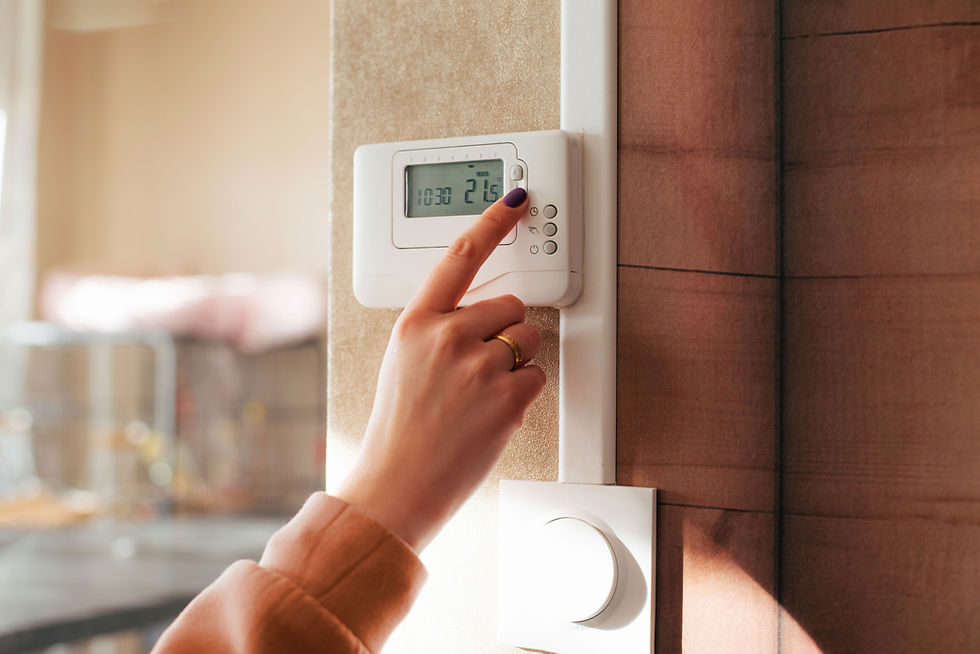Smart Thermostats vs Manual Controls An Insightful Comparison on Energy Savings
- Dennis Asis

- May 13
- 3 min read

In an age where energy prices are rising, homeowners are eager to save on utility bills while ensuring a comfortable living environment. One emerging solution is the smart thermostat, praised for its advanced features that provide energy efficiency. On the other hand, a significant number of households stick with traditional manual thermostats. This article delves into the distinctions between smart thermostats and manual controls, emphasizing their potential for energy savings.

Understanding Smart Thermostats
Smart thermostats are innovative devices designed to learn your heating and cooling patterns over time. They can adapt to your daily routine by automatically adjusting temperatures based on when you are home or away. For instance, some models come equipped with geofencing technology, which adjusts the temperature according to your phone's location. This feature can save a considerable amount of energy.
In fact, various studies indicate that smart thermostats can lower heating and cooling costs by an impressive 10-15% each year. If your annual heating and cooling expenses amount to $1,200, a smart thermostat could save you between $120 and $180 per year.

The Basics of Manual Thermostats
Manual thermostats have been around for a long time and offer simplicity. However, they lack the smart features that often lead to energy savings. Homeowners using manual thermostats must adjust the temperature themselves. For example, if you forget to lower the heat while you’re on vacation for a week, you could be wasting energy significantly.
Though manual thermostats do not have initial technology costs, they can contribute to higher energy bills. Many people spend $500 or more each year on heating and cooling. Using a manual thermostat means these costs can be higher because it does not automatically adjust based on your habits.

Cost Comparison: Upfront vs. Long-Term
The upfront cost of a smart thermostat typically ranges from $100 to $250, while basic manual thermostats can be purchased for as low as $20. At first glance, smart thermostats may seem more expensive. However, considering the long-term savings is crucial.
With smart thermostats potentially lowering energy bills by 10-15%, they can pay for themselves within a few years. For example, if you save $150 per year, your smart thermostat will break even in about 1-2 years. On the other hand, manual thermostats may result in higher energy costs over time without providing the same opportunities for savings.

Installation and Usability
Installing a smart thermostat is generally a simple task that many homeowners can handle independently. However, some advanced features might require professional installation, which may add to the cost. Conversely, manual thermostats are often very easy to install, making them attractive for those who prefer simplicity. Nonetheless, without automation, users may miss several chances for energy savings daily. smart thermostat vs manual savings

Technology and Future Proofing
Smart thermostats not only enhance energy efficiency but also integrate seamlessly with other smart home devices like lighting and security systems. For instance, using a smart thermostat with smart lighting can create a coordinated energy-saving schedule, optimizing your home’s energy use.
Manual thermostats, however, do not have this compatibility. By investing in a smart thermostat, you are opting for a technology that will keep up with advancements, while manual thermostats may soon become obsolete as energy-efficient technology advances.
Final Thoughts smart thermostat vs manual savings
In comparing smart thermostats and manual controls, smart thermostats clearly stand out in areas such as energy savings, convenience, and adaptability. Although the initial expense of a smart thermostat might be higher, the long-term savings and benefits far outweigh the costs.
For homeowners looking to significantly cut energy costs while embracing new technology, switching to a smart thermostat is a wise decision. It’s essential to consider your preferences, budget, and lifestyle when determining the best option for your energy management needs.






Comments